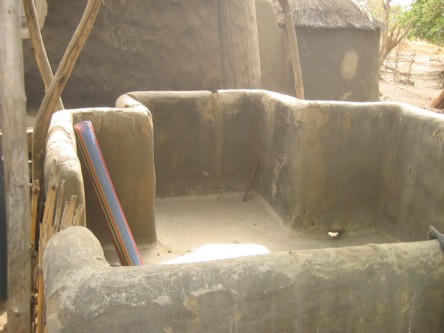
Islam in Northern Ghana and among the Bulsa
It is well known that soon after Mohammed’s death (632), his successors conquered the whole of Northern Africa for the huge Umayad empire (caliphate) by means of military invasions. In central Sudan, however, Islam spread in a more peaceful way. It was particularly Islamic Berber merchants who crossed the Sahara with their camels and propagated their belief among the “unbelievers”. Concerning the penetration of Islam into the region of modern Ghana, Peter Barker (1986, p. 48) writes:
1300-1900: Trade carries the crescent. Islam finally entered the states of the Volta basin – the territory we know today as Burkina Faso and Ghana – in the caravans of Muslim traders, who bought and sold slaves at Salaga and came to Begho and Kumasi for gold... Most caravans included a Muslim cleric, and gradually these men attached themselves to chiefly courts in the states of the Volta basin. Mande and Dyula traders first reached Gonja between 1300 and 1400.
The early Muslims of the Bulsa territory are associated with the names Kantusi (called so in an English context) or Yarisa (in Buli). The meaning of these names is not always the same and gives rise to much confusion. The Yarisa or Yarsi/ Yarsé (from Yadasi = ‘Muslims’) are described by some authors as Mande groups who came to the Mossi area in the 16th century, but gave up their Mande language in favour of More. The Yarsé in Burkina Faso are Moslem traders some of whom are also engaged in weaving, dying, sewing and agriculture in the rainy season. The Kantusi (Kantonsi) are also described as Muslim merchants of Mande origin, but according to Levtzion (1968, p. 53-54, 85-86) they came by way of Wa to the tribal areas of the Sisala, Kasena and Bulsa.
There is a tendency among the Bulsa to refer to all Muslim traders of foreign origin as Kantusi (Yarisa). Several Kantusi told me that they are actually genuine Mossi. The 19th century is usually given as the period of immigration, but smaller groups might well have come before this. They appeared among the Dagomba and Konkomba as early as the 16th century. In the Bulsa District, most of them live in Sandema and Fumbisi. The “Ethnologue Report” (www.ethnologue.com) of the Summer Institute of Linguistics (SIL) ascribes the “Kantosi” language to the “Kantonsi” (or Yare, Yarsi), which belongs to the Gur-languages and is closely related to Kamara, Frafra and Dagbani. I was told that all Kantusi of the Bulsa District can speak Buli.
As there are not yet many Bulsa who have converted to Islam, the number of Kantusi may approximately represent the number of Muslims. According to the “Ethnologue Report” of 2003, there are 250-350 Kantusi living the Bulsa District. In August 1973, I made inquiries about Religion and other subjects in the then six Bulsa Continuation Schools (Forms 3 and 4). Eight of the sample of 224 pupils called themselves Muslims, i.e. the percentage was 3.6 (Sandema 7.3%, Wiaga and Chuchuliga 0%, Fumbisi 0.4%). These results can, of course, not be regarded as representative for the whole Bulsa community. According to Barker (1986, p. 149) the estimated percentage of Muslims in the Bulsa District is under 1.

Literature on Islam in Northern Ghana
Barker, Peter: see Literature on Christian missions
Ethnologue Bibliography, www.ethnologue.com Summer Institute of Linguistics 2003
Levtzion, Nehemia: Muslems and Chiefs in West Africa. Oxford 1968.
Trimingham, J. Spencer: A History of Islam in West Africa. London, Oxford, New York: Oxford University Press 1962.